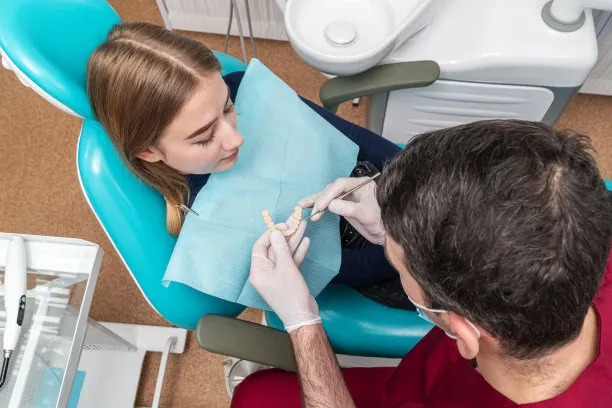Essential Guidelines and Precautions to Ensure a Successful Root Canal Treatment Experience and Promote Optimal Dental Health
Summary: Root canal treatment, while often daunting for patients, is a critical procedure in dental care aimed at saving damaged or infected teeth. This article provides essential guidelines and precautions to ensure both a successful root canal treatment experience and the promotion of optimal dental health. By focusing on pre-treatment preparation, understanding the procedure, post-treatment care, and the importance of regular follow-ups, patients can significantly reduce anxiety and increase the chances for a positive outcome. The aim is to demystify this procedure, making it more approachable for those in need of this vital dental intervention.
1. Importance of Pre-Treatment Preparation

Before undergoing root canal treatment, adequate preparation is essential. First and foremost, patients should schedule a thorough consultation with their dentist to discuss their specific case and any concerns they might have. Understanding the reasons for the treatment helps in alleviating fears and setting realistic expectations. During this consultation, dentists often take X-rays to assess the extent of the damage and develop a tailored treatment plan.
Additionally, patients are advised to inform their dentist of their medical history, including any allergies or existing health conditions. Certain medications, such as blood thinners, can affect the treatment process. By providing this information, dentists can minimize risks and ensure a safe procedure. Proper communication is key to defining the path forward.
Finally, it is beneficial for patients to arrange for transportation to and from the dental office. Some sedation techniques may leave patients feeling groggy, and having someone to assist can enhance comfort and safety. Preparation empowers patients to approach their appointment with confidence.
2. Understanding the Root Canal Procedure
Understanding the root canal procedure itself can significantly reduce anxiety. The treatment usually begins with local anesthesia to numb the area around the affected tooth, ensuring that the patient remains comfortable throughout the process. Once numb, the dentist creates an opening in the crown of the tooth to access the pulp chamber.
The next step involves thoroughly cleaning and shaping the root canals. Specialized instruments are used to remove all infected pulp tissue and debris, followed by disinfection to prevent future infections. This step is crucial; any remnants left behind can lead to treatment failure.
After the cleaning process, the dentist fills the canals with a biocompatible material known as gutta-percha, sealing them to prevent re-infection. Finally, the access hole is sealed, and in some cases, a temporary crown may be placed, with a permanent one positioned in subsequent visits. Understanding these steps helps demystify the process and can alleviate fears.
3. Post-Treatment Care for Recovery
After a root canal treatment, proper post-operative care is vital to promote healing and ensure the success of the procedure. Patients may experience some discomfort, which can typically be managed with over-the-counter pain relief medications. Dentists usually provide specific instructions on which medications are appropriate and necessary.
Maintaining good oral hygiene following the treatment is also crucial. Patients should brush and floss gently around the treated area to prevent plaque buildup while avoiding excessive pressure that could disturb the healing tissue. Following the dentists recommendations regarding diet is important; avoiding sticky or hard foods helps prevent damage to the tooth before it fully heals.
Furthermore, attending follow-up appointments is essential. These visits allow the dentist to monitor the healing progress and identify any issues that may arise. Regular check-ups not only ensure recovery but also help maintain overall dental health. Being proactive in post-treatment care fosters a smooth recovery and enhances patient outcomes.
4. Importance of Regular Follow-Ups for Dental Health
Regular follow-ups after root canal treatment are critical for sustaining dental health. These appointments allow dentists to assess the treated tooth, ensuring that it is healing properly. Ignoring scheduled visits can lead to complications or re-infection, which can jeopardize the entire treatment.
Moreover, these follow-ups are a valuable opportunity for dentists to educate patients on their oral health. They can provide personalized advice on maintaining good dental hygiene practices, recommend lifestyle changes, or address any new issues that may arise. This proactive approach empowers patients to take charge of their dental health.
In addition, such check-ups contribute to overall oral health assessments. The mouth is interconnected, and problems can emerge in other areas over time. Regular visits help in early detection of cavities, gum disease, or other potential issues, ensuring comprehensive care for the patients dental health.
Summary:
In conclusion, ensuring a successful root canal treatment experience encompasses several crucial guidelines, including thorough pre-treatment preparation, understanding the procedure, diligent post-treatment care, and maintaining regular follow-up appointments. By adhering to these practices, patients can not only enhance their chances of a successful outcome but also foster optimal dental health.
This article is compiled by Vickong Dental and the content is for reference only.


